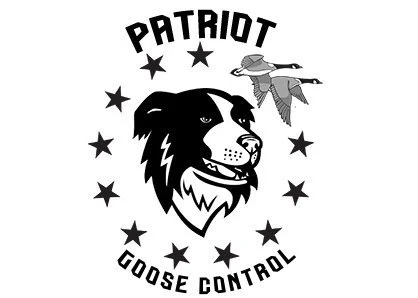Frequently Asked Questions
Q: Why are Canadian geese more of a nuisance now than in the past?
A: According to the US Fish and Wildlife service, the number of resident Canada geese in the US has increased 14-fold in the last 40 years. Over the years, they have grown increasingly comfortable in urban and suburban areas, free from predators and hunters (they are a protected species). Once individual geese have become comfortable in a certain location, they are more and more resistant to leaving, and their physical presence attracts other geese who see them from the air. This is why hunters make effective use of decoys with all sorts of waterfowl.
Q: Doesn’t the presence of Canada geese make a location seem more rural and wildlife-friendly?
A: The problem is not the geese themselves, but the droppings they produce. Each adult goose deposits approximately 2 pounds of droppings per day indiscriminately around the location where they reside. As the goose population increases, lawns, sidewalks and parking lots become off-limits to humans. Droppings contain various bacteria and parasites, including E. Coli and Giardia. In large amounts, droppings raise the nitrogen in lakes and ponds, causing algae blooms that kill off fish and other aquatic life. Over time and given the absence of predators, the number of geese who are permanently resident at a location will multiply until the grass that grows there will no longer support
all of them.
Q: Won’t all dogs chase geese away?
A: Most dogs will instinctively chase geese, and geese perceive most dogs as a nuisance. They will relocate a few hundred feet away, or in a nearby body of water, and return as soon as the dogs leave. But border collies are perceived by geese as predators, due to the distinctive body language they use, which is different from all other breeds of dogs. This is due to the border collie’s natural predatory behavior in the presence of geese. This behavior includes lowering its head and tail, and moving straight at the geese in a slow, stalking manner while staring intensely and directly at the geese. This is referred to as giving the geese “the eye”, and geese are quite intimidated by this behavior
Q: What specific techniques do Patriot Goose Control border collies use to harass geese?
A: Border collies are natural herding dogs, so working with a handler, they will encircle and herd the geese into a controllable area, then approach the geese straight on in a threatening, predatory manner. Should they fly into a nearby body of water, the border collie immediately takes to the water and continues the same stalking behavior while swimming. When harassed by a Patriot Goose Control border collie, whether on land or in the water, Canada geese will take to the air and leave the area.
Q: Is there a specific time of day when it is harassing geese is most effective?
A: There is no one single time of day that is best for harassing geese. What is most important is to continually vary the times, so that the geese perceive the area as unsafe due to the unpredictable presence of “predators,” and permanently consider the location unsafe.
Q: How much does Patriot Goose Control charge for its services?
A: Patriot Goose Control will furnish you with a quote, based on the site size, difficulty of access, and length of service required.
Q: What sort of warranty do you offer?
A: Patriot Goose Control guarantees a 90% permanent reduction in Canada goose presence as long as your Patriot Goose Control contract is in force, after an initial start-up period of approximately two weeks.
Q: What seasons pose the greatest problems for goose control?
A: Spring is the most difficult time to dislodge them, because they return to the place of their birth and persist in attempting to build nests and hatch eggs at that location. Even under optimal circumstances, it typically takes three years of unsuccessful nesting and hatching to permanently
persuade a nesting pair to relocate their nesting grounds. After the eggs hatch, the young goslings cannot be removed through harassment, because they cannot fly. Then the adult geese molt (lose their flight feathers) for 6-8 weeks, so they cannot be effectively harassed either. During the fall months, goose control again becomes a problem, because the small family units now combine into large flocks, making the impact of a random landing on property owners much more severe. Also, resident geese are joined by migrant geese during these months, further increasing the difficulty of controlling them. During the coldest winter months, Canada geese congregate where they can find open water for protection, usually in the center of very large bodies of water, and are less of a nuisance to property managers. So although the greatest amount of activity is during the spring and fall, the longer geese are comfortable in a specific location the more likely some of them are to stay there year-round.
If you have any further questions or concerns, please let us know through our Contact page or call us at the number below.
Patriot Goose Control
PO Box 540553
Waltham, MA 02454
617-982-2111


